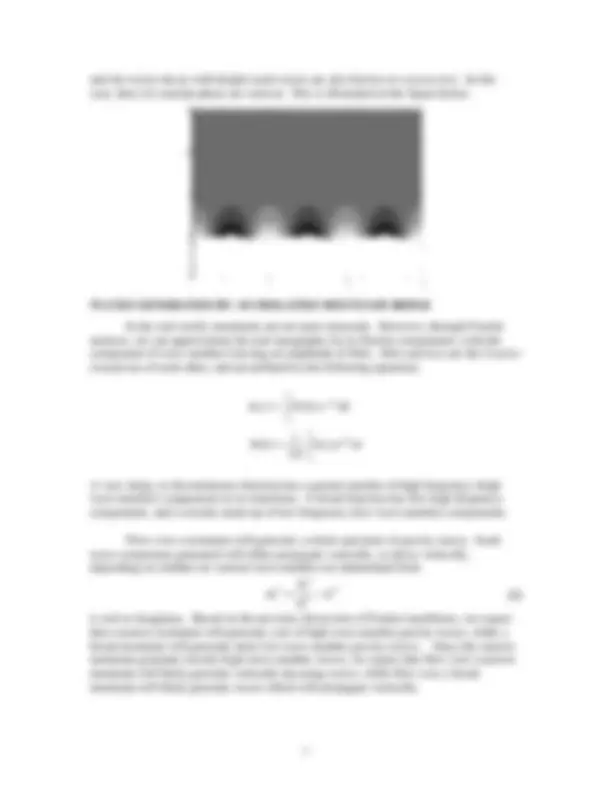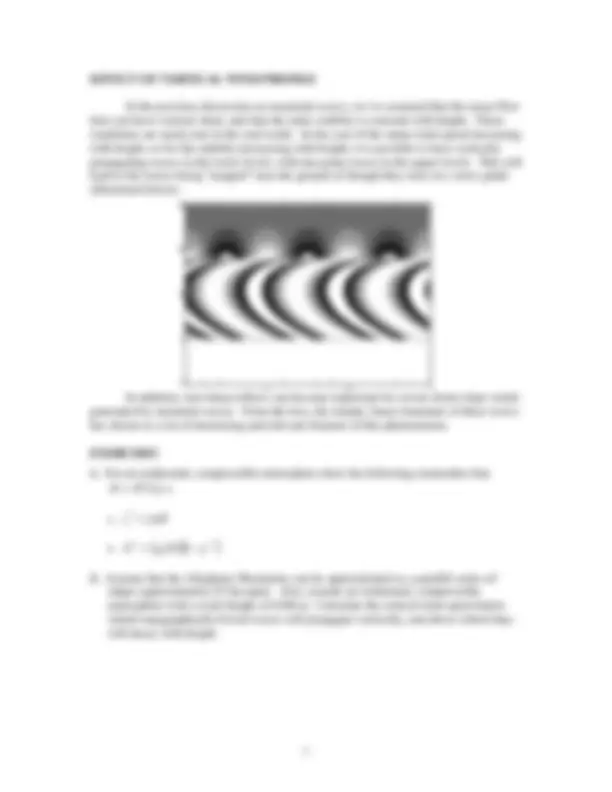




Study with the several resources on Docsity

Earn points by helping other students or get them with a premium plan


Prepare for your exams
Study with the several resources on Docsity

Earn points to download
Earn points by helping other students or get them with a premium plan
Community
Ask the community for help and clear up your study doubts
Discover the best universities in your country according to Docsity users
Free resources
Download our free guides on studying techniques, anxiety management strategies, and thesis advice from Docsity tutors
Material Type: Notes; Class: Atmospheric Dynamics 2; Subject: Earth Sciences; University: Millersville University of Pennsylvania; Term: Unknown 1989;
Typology: Study notes
1 / 4

This page cannot be seen from the preview
Don't miss anything!



ESCI 343 – Atmospheric Dynamics II Lesson 10 - Topographic Waves
Reference: An Introduction to Dynamic Meteorology (3rd^ edition) , J.R. Holton
Reading: Holton, Section 7.4.
STATIONARY WAVES
Waves will appear to be stationary if their phase speed is equal and opposite to the mean flow, c = − u. Stationary waves will have a frequency of zero, since they do not oscillate in time, only in space. For dispersive waves, the wavelength of the stationary wave will correspond to that wavelength which has a phase speed equal and opposite to the mean flow. None of the other wavelengths will be stationary. An example of stationary waves is the stationary wave pattern that forms in a river when it flows over a submerged rock or obstacle. The flow of the obstacle generates many different waves of various wavelengths, but only the ones whose phase speed is equal and opposite to the flow will remain stationary. If the flow speeds up or slows down, the wavelength of the stationary wave will change.
DISPERSION RELATION FOR STATIONARY INTERNAL GRAVITY WAVES
In the atmosphere, flow of a stably stratified fluid over a mountain barrier can also generate standing waves. If we consider the flow over a sinusoidal pattern of ridges that are perpendicular with the x -axis, and with a horizontal wave number of k , then we can analyze the structure of these waves. Since these waves are internal gravity waves in the presence of a mean flow their phase speed and dispersion relation is simply
2 2
2 2
k m
kN uk
k m
c u
ω
(remember that since these are linear waves, the mean flow simply adds a term u k to the frequency). But, we are only interested in the standing waves generated by the topography, for which the phase speed (and therefore, frequency) is zero. For standing waves then, we have
0 2 2
k m
u.
The horizontal wave number, k , is determined by the wave number of the terrain; u and N are properties of the atmosphere. Since these quantities are predetermined, then there is only one value of vertical wave number, m , which can satisfy the dispersion relation. Thus, m is given by
2 2
2
Equation (1) is the dispersion relation for stationary internal gravity waves.
The vertical structure of the standing waves is determined by how N , k , and u relate to one another. Vertically propagating waves. If k < N u then the right hand side is positive,
and m is real. This corresponds to waves that propagate vertically, since the sinusoidal form for the dependent variables is
e i (^ kx +^ mz ). Along lines of constant phase ( kx + mz ) the following relation holds
kx + mz = b
where b is a constant. This means that phase lines obey the following equation,
m
b x m
k z = − +.
This tells us that the lines of constant phase tilt upwind with height, since they have a negative slope (see figure below). Since the wave is propagating upstream (it has too, since it is a standing wave), the individual wave crests have a downward component of phase speed. This means that the group velocity is upward, so that topographically forced waves propagate energy upward.
Vertically decaying waves. If k > Nu then the right-hand-side negative. In this
case the sinusoidal form for the dependent variables is e ikx^ e −^^ mz ,
In the previous discussion on mountain waves, we’ve assumed that the mean flow does not have vertical shear, and that the static stability is constant with height. These conditions are rarely met in the real world. In the case of the mean wind speed increasing with height, or for the stability decreasing with height, it is possible to have vertically propagating waves in the lower levels, with decaying waves in the upper levels. This will lead to the waves being “trapped” near the ground as though they were in a wave guide (illustrated below).
In addition, non-linear effects can become important for severe down-slope winds generated by mountain waves. None-the-less, the simple, linear treatment of these waves has shown us a lot of interesting and relevant features of this phenomenon.
EXERCISES
1. For an isothermal, compressible atmosphere show the following (remember that H = R ′ T g ):
2. Assume that the Allegheny Mountains can be approximated as a parallel series of ridges approximately 25 km apart. Also, assume an isothermal, compressible atmosphere with a scale height of 8100 m. Calculate the critical wind speed below which topographically forced waves will propagate vertically, and above which they will decay with height.